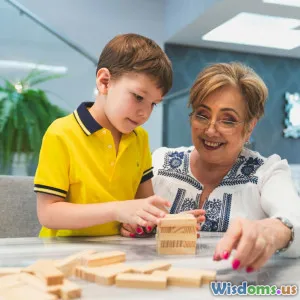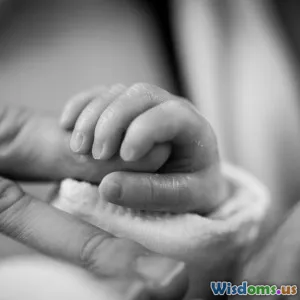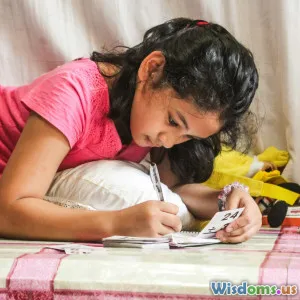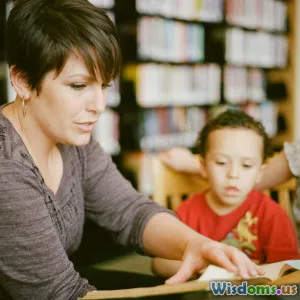
Will Blended Families Become the New Normal
8 min read Explore the rise of blended families and how they may shape the future of family dynamics worldwide. (0 Reviews)
Will Blended Families Become the New Normal?
Introduction
Family structures have evolved dramatically over recent decades. The traditional nuclear family—once seen as the societal cornerstone—is no longer the only norm. Instead, blended families are emerging as a powerful new representation of family life. But will blended families become the new normal? This article explores this compelling question by analyzing shifting demographics, psychological dynamics, economic realities, and cultural perspectives.
Blend families, also called stepfamilies, occur when partners bring children from previous relationships into a new household. These families challenge traditional family models and introduce complexity, but also resilience and new forms of connection. Let's dive into why blended families are more common than ever and what the future of family might look like.
The Rise of Blended Families: Trends and Statistics
Statistical Growth of Blended Families
Blended families have seen significant growth due to increased divorce rates, remarriage, and cohabitation trends. According to a 2019 Pew Research Center study, about 16% of children under 18 in the U.S. lived in blended families. This figure has climbed steadily over the past decades. In fact, estimates suggest that roughly one in three marriages involves at least one partner who has children from a previous relationship.
Worldwide, the expansion of blended families correlates with changing social norms. For example, Scandinavian countries have noted a rise in remarriage combined families, supported by progressive social policies recognizing diverse family forms.
Factors Contributing to the Growth
-
Higher Divorce Rates: The increased divorce rate has naturally created conditions ripe for blended families. The CDC reported that about 39% of first marriages in the U.S. end in divorce.
-
Later Marriages and Remarriages: People are marrying later, and many who remarry bring children from previous unions, creating blended households.
-
Cohabitation Without Marriage: Cohabitation offers flexibility that traditional marriage does not, increasing blended family arrangements.
-
Cultural Acceptance: Society is more accepting of diverse family forms, reducing stigma and encouraging blended families.
Real-World Insight
Psychologist Dr. Stephanie Coontz states, "The family is a social construct that continuously adapts. Blended families show how families evolve through challenges and change."
Complex Dynamics of Blended Families
Psychological and Emotional Challenges
Blended families often experience unique emotional hurdles. Children may struggle with loyalties, feelings of abandonment, or rivalry between stepsiblings. Parents face the balancing act of discipline and love, negotiating new roles often without societal scripts.
Research from the National Stepfamily Resource Center shows that stepchildren living with stepparents have higher risks of emotional distress than those in nuclear families, although outcomes improve over time with effective communication and bonding.
Navigating Parenting Roles
Creating parenting roles is one of the toughest aspects. Biological parents may feel protective, while stepparents need to establish authority sensitively. Studies indicate that stepparent involvement in child discipline is linked to higher stress unless balanced with cooperative coparenting.
Building New Traditions and Identities
Successful blended families create new rituals combining different backgrounds. For example, one family might blend holiday traditions from prior families to foster belonging. Real-world example: The Anderson-Stevens family hosts a special "Stepfamily Night" where each guy cooks a signature dish blending cuisines from their past.
Benefits and Strengths of Blended Families
Resilience and Adaptability
Blended families demonstrate remarkable adaptability. They provide children with models of negotiation, empathy, and complexity. This can teach vital social skills not commonly learned in nuclear families.
Dr. Amy Baker, an expert in blended family therapy, highlights that "overcoming the challenges of blending builds resilience and emotional intelligence for all family members."
Expanding Support Networks
Children gain more adult role models and extended family members. This broadens emotional and social support, contributing positively to children’s development.
Promoting Diversity and Inclusivity
Blended families often incorporate multicultural, interracial, and intergenerational experiences, promoting inclusivity. This diversity better reflects the increasingly interconnected global society.
Societal Implications and the Future
Shifting Social Norms
As blended families grow, society becomes more hospitable to different family structures. Schools, workplaces, and social services gradually adapt policies to accommodate varied household configurations.
For instance, some schools recognize "family units" rather than only legal parents for parent-teacher communications, acknowledging step-parents’ roles.
Legal and Policy Challenges
Policy frameworks lag in protecting blended families comprehensively. Issues include custody complexities, inheritance rights, and healthcare decision-making. Improved legal recognition would support the stability of these families.
Potential as the New Normal
Given demographic trajectories, blended families are poised to become the predominant family model. This does not mean traditional nuclear families will vanish but rather that multi-structured families sharing mutual respect and collaboration will define future norms.
Conclusion
Blended families represent a dynamic, growing phenomenon reshaping the concept of family worldwide. While they carry inherent complexities, their rise reflects societal evolution: embracing diversity, adaptability, and emotional growth. As legal systems and social attitudes evolve, blended families may well solidify as the new normal, showcasing the enduring power of kinship beyond biology.
Their importance extends beyond demographics; blended families teach us how to create meaning, connection, and identity anew in an ever-changing world. Understanding and supporting these families will be essential for fostering healthy, resilient communities in the future.
References
- Pew Research Center, "The State of American Families," 2019
- CDC National Vital Statistics Reports, 2020
- National Stepfamily Resource Center, Family Dynamics Studies, 2021
- Coontz, Stephanie. "The Way We Never Were," 2016
- Baker, Amy J. L., "Stepfamily Therapy: Helping Stepparents and Stepchildren," 2015
Rate the Post
User Reviews
Popular Posts



















